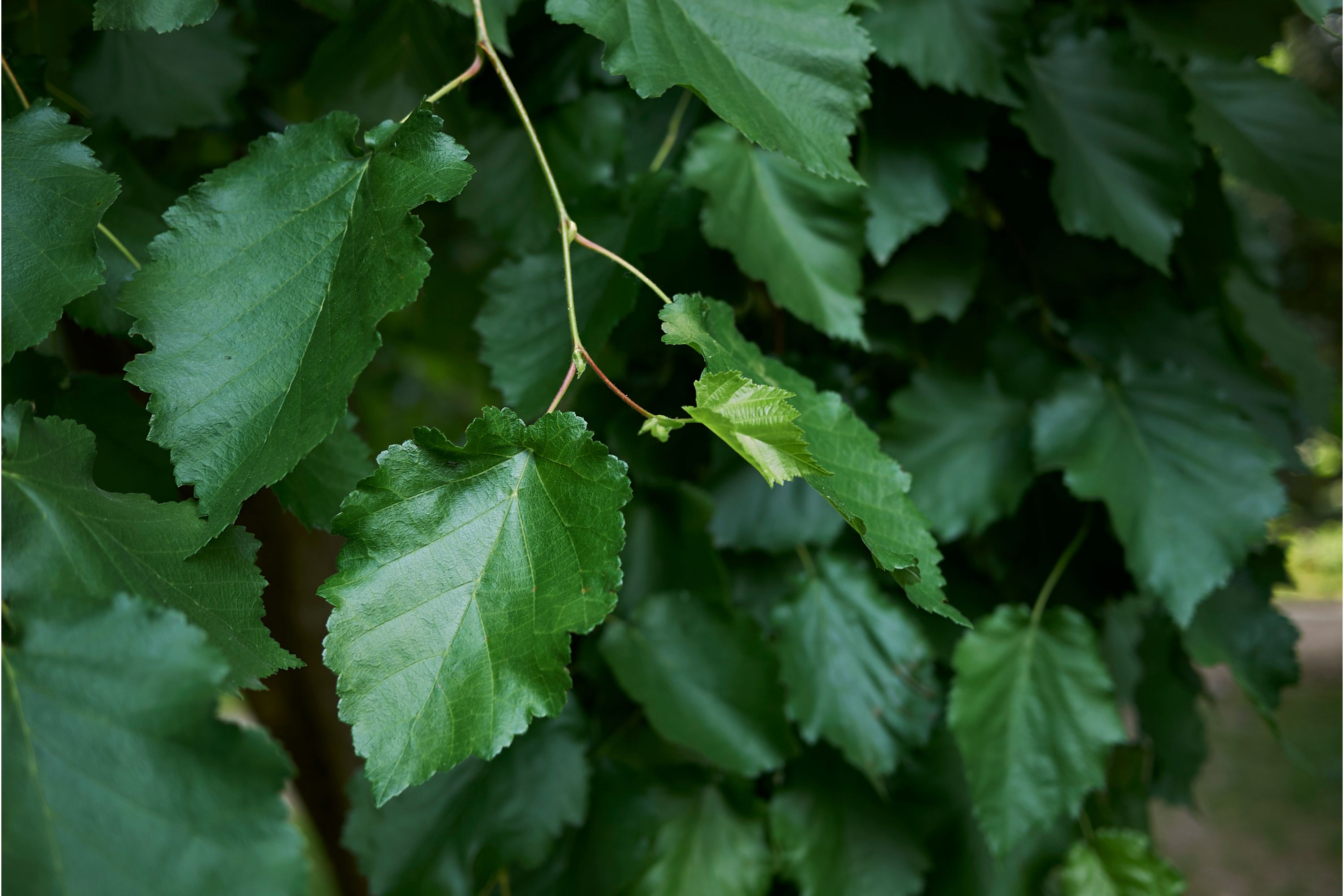Turkish hazel
(Corylus colurna)

Description
Corylus colurna, the Turkish hazel or Turkish filbert, is a deciduous tree native to southeast Europe and southwest Asia, from the Balkans through northern Turkey to northern Iran. It is also found growing wild in the forests of Western Himalayan range in the north Indian state of Himachal Pradesh particularly in the temperate regions of districts of Kullu, Shimla, Kinnaur district and Chamba district It is the largest species of hazel, reaching 25 m (82 ft) tall, with a stout trunk up to 1.5 m (4 ft 11 in) in diameter; the crown is slender and conical in young trees, becoming broader with age. The bark is pale grey-buff, with a thick, corky texture. The leaves are deciduous, rounded, 6–15 cm long and 5–13 cm across, softly hairy on both surfaces, and with a coarsely double-serrate to shallowly lobed margin. The main limbs are quite small in diameter in relationship to the straight trunk, and arise at almost a 90-degree angle. Making the tree quite durable to urban conditions and helps maintain a symmetrical crown which landscape architects love so much. The flowers bloom in early spring before the leaves, and are unisexual, with single-sex catkins; the male pale yellow and 5–10 cm long, the female very small and largely concealed in the buds, with only the bright red 1–3 mm long styles visible. The flowers on female trees are not very visible. On male trees, however, the flowers are visible. The fruit is a nut sometimes called "Turkish nuts" about 1–2 cm long, surrounded by a thick, softly spiny and bristly involucre (husk) 3 cm diameter, which encloses all but the tip of the nut; the nuts are borne in tight clusters of 3-8 together, with the involucres fused at the base. The fruit matures in September and is edible, with a taste that is very similar to common hazels. They are occasionally gathered from the wild as well as from urban trees, but their small size (smaller than common hazel nuts) and very hard, thick nut shell (3 mm thick) makes them of little or no commercial value. Corylus colurna is however important in commercial hazelnut orchards, as it does not sucker, making it the ideal rootstock on which to graft the nut-bearing common hazel cultivars. The nut can only be found on female trees. Nut production is irregular and occurs every two to three years
Taxonomic tree:







